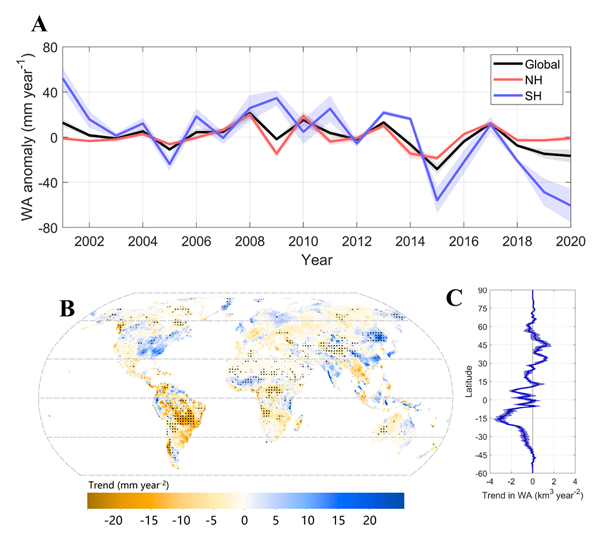Study Shows Declining Trend in Global Water Availability
Global water availability is of critical significance to water resources for human livelihoods and socioeconomic development. Over the past two decades, global water availability has undergone substantial changes due to the complex interplay of climate change, changes in vegetation cover, and human activities.
Understanding land-based water cycles is an urgent imperative for addressing the challenges of climate change and implementing sustainable water resource management.
Prof. ZHANG Yongqiang at the Institute of Geographic Sciences and Natural Resources Research, Chinese Academy of Sciences and his team quantified the annual trends in global land water availability from 2001 to 2020. Using a combination of satellite data and large-scale basin observations they defined water availability as the net difference between precipitation supply and evapotranspiration demand.
The study was published in Science on November 3.
The researchers revealed that global water availability has significantly decreased, which was mainly due to the substantial decrease of water availability in the Southern Hemisphere, especially in regions such as South America, southwestern Africa, and northwestern Australia (Figure 1).
Conversely, the Northern Hemisphere has witnessed a mixed bag of trends, with some areas experiencing increased water availability, while other regions, such as Southeast Asia, eastern Europe, and Siberia, have seen declined water availability.
These changes are primarily driven by climate patterns, particularly those associated with El Ni?o-Southern Oscillation (ENSO). Additional factors, including vegetation greening and direct human activities, play a secondary role.
“This research presents the importance of understanding and managing water resources in the face of climate change and it is potential to exacerbate regional water resource challenges, especially in the Southern Hemisphere”, Prof. ZHANG said.
“It also sheds light on the limited global-scale impact of vegetation changes on water resources, emphasizing that the relationship between vegetation and water availability is complex and further regional investigation is required”, he added.
“The findings of Zhang et al. for the past two decades suggest future water management challenges in the Southern Hemisphere.”, Professor Günter Bl?sch, a global leading hydrologist said in a companion perspective. He further added that “There are water management challenges ahead brought about by reduced water resources in the Southern Hemisphere. Reduced water availability requires a shift from crisis response to long-term, proactive water management, as advocated in the Prague Statement of the International Association of Hydrological Sciences (IAHS)”.
 |
| Fig. 1.Annual time series, variability and trend of global land water availability (WA) (Image by ZHANG Yongqiang) |
Download attachments: